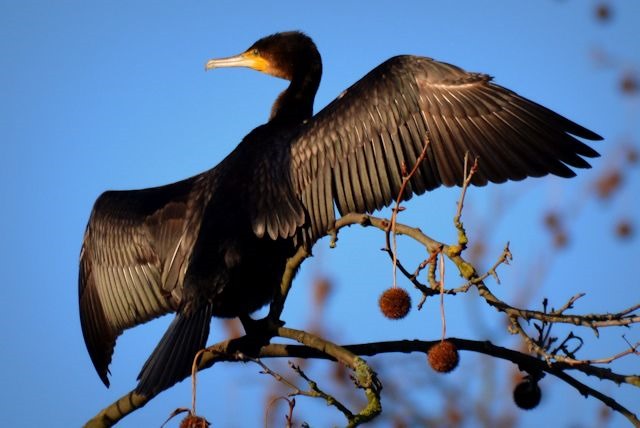A double-crested cormorant drying its feathers.
poster

Image by Ben Kerckx is licensed under CC0 Public Domain
In the last 15 years or so, cormorants have been regular winter inhabitants down in the Arkansas River Valley. Large numbers often perch, many with wings spread wide, on the cross braces of an electrical transmission tower rising from the water between US 64 and the Union Pacific Railroad tracks, where both cross the Illinois Bayou area of Lake Dardanelle.
The double-crested cormorant mainly eats fish, hunting for food by swimming and diving. Like all cormorants, its feathers are not completely waterproof. After diving, it stands for long periods in a characteristic wings spread pose, which allows the feathers to dry.
A member of the cormorant family of seabird, the double-crested cormorant occurs along inland waterways as well as in coastal areas, and is widely distributed across North America, from the Aleutian Islands in Alaska down to Florida and Mexico. Measuring 70–90 cm (28–35 in) in length, it is an all-black bird which gains a small double crest of black and white feathers in breeding season. It has a bare patch of orange-yellow facial skin. (Wikipedia)

